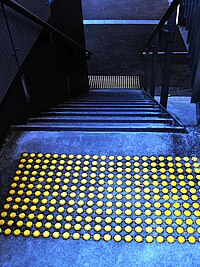
Photo from wikipedia
Introduction: In postherpetic neuralgia (PHN) different types of patients can be distinguished regarding their predominant peripheral nociceptor function. Objective: The aim was to examine somatosensory profiles in the course of… Click to show full abstract
Introduction: In postherpetic neuralgia (PHN) different types of patients can be distinguished regarding their predominant peripheral nociceptor function. Objective: The aim was to examine somatosensory profiles in the course of disease with special regard to the different subtypes existing in PHN. Methods: Twenty patients with PHN (7 men and 13 women, age 67 ± 9.6 years) were examined at baseline (disease duration 18.1 ± 26 months) and follow-up (31.6 ± 23.8 months later) with quantitative sensory testing (protocol of the German Research Network on Neuropathic Pain). Results: Fourteen (70%) PHN patients presented with impaired (iPHN) and 6 (30%) with preserved (pPHN) C-fiber function. Groups did not differ regarding age, disease duration, or pain intensity at baseline. Both groups did not differ regarding change in pain intensity (−0.5 ± 2.3 vs −1.7 ± 2.6 numerical rating scale, P = n.s.) at follow-up. Impaired PHN improved in thermal and mechanical detection thresholds as well as allodynia independent from change in pain intensity. By contrast, pPHN showed an increase in mechanical pain sensitivity (1.4 ± 2.5 vs −0.4 ± 2.2, P < 0.05) and a trend towards a stronger loss of detection (66% vs 33%, P = n.s.) on follow-up. Conclusion: Results demonstrate that patients with preserved C-fiber function are more predisposed to develop signs of central sensitization as demonstrated by an increased mechanical pain sensitivity. Impaired C-fiber function is able to improve even in chronic cases, but a functional loss is unlikely to play a role here. The knowledge of development of somatosensory profiles in the course of the disease offers possibilities to optimize a mechanism-based treatment.
Journal Title: Pain Reports
Year Published: 2018
Link to full text (if available)
Share on Social Media: Sign Up to like & get
recommendations!